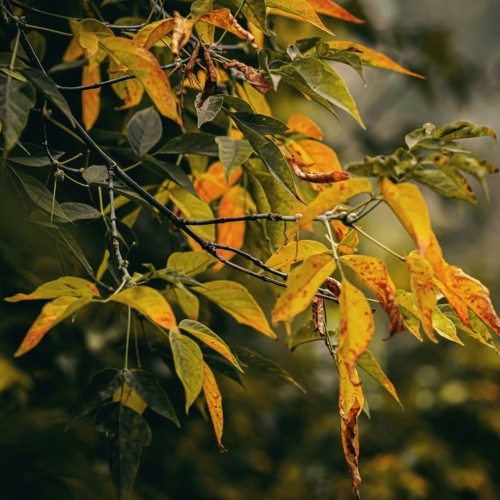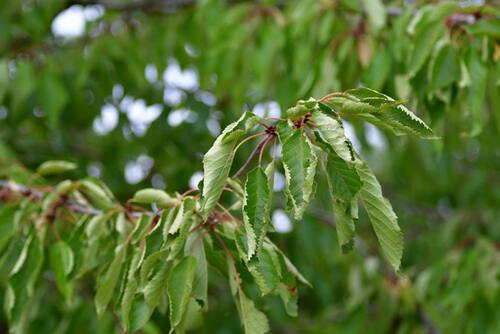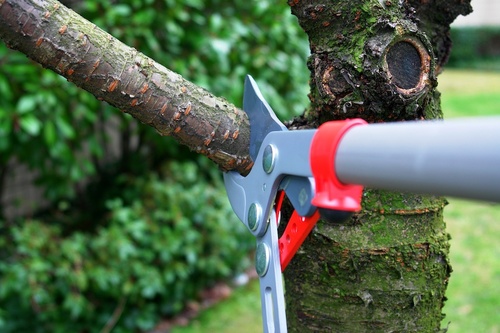Tree Stress Symptoms: Identifying and Treating Common Signs of Tree Health Issues
Introduction
Much like humans, trees can also become
stressed out
. This can seriously affect their health like it can for us if not dealt with quickly. This is why recognizing the symptoms of stress in trees is important to keep them healthy. By recognizing these symptoms early, we can do what is needed to moderate what is stressing out the tree, restoring its health.
Things like the environment, pests, diseases, and damage can all cause tree stress. Luckily, there are many signs you can look out for so that you can recognize what is happening to your tree. Follow along as we talk about how to recognize these signs and how to deal with them.
Tree Health Indicators
Identifying tree problems can be tricky unless you know what to look for. Knowing how to identify signs of stress can help you figure out if there is a problem with your tree and how to deal with it. Here are some symptoms to look for that show your tree is stressed.
VISUAL TREE STRESS SYMPTOMS

Discolored Tree Leaves – Photo by Artem Beliaikin on Unsplash
The first signs that a tree is stressed are often visual. Here are some key things to watch out for:
- Leaf Discoloration and Early Leaf Loss: Leaves turning yellow, brown, or red out of season. This could be a sign that your tree isn’t getting enough nutrients. Check the soil’s pH and nutrient levels to ensure it has enough easily absorbable nutrients for your tree. If it doesn’t, apply the right fertilizers to correct this. Make sure your tree is also getting enough water.
- Wilting or Drooping Leaves: Leaves that appear limp or lifeless. This could be due to a lack of moisture. Make sure to water your tree deeply and regularly, especially during dry periods . Mulching around the base will also help your tree retain moisture.
- Sparse Canopy or Thinning Foliage: A noticeable decrease in the number of leaves. Pruning dead or weak branches can encourage new growth. Make sure the tree is also getting enough light and nutrients.
- Leaf Size Changes: Leaves that are smaller than usual. Check for pests in your tree. If your tree is infested, then treat it accordingly. Make sure to also fertilize the tree so it gets the necessary nutrients.
- Premature Leaf Drop : Leaves dropping before autumn.
Look for underlying causes like pests, diseases, or things in the environment that could stress your tree out. Dealing with these, as well as regularly watering and mulching the tree, will help your tree stay healthy.
Examples:
- If a maple tree turns yellow in the summer, it can be a sign of a lack of iron because of poor soil conditions.
- Oak trees wilting and dropping their leaves can be a sign of oak wilt disease .
BARK-RELATED TREE STRESS SYMPTOMS

A Person Examines & Touches Tree Bark
Bark health is another important sign of tree stress. Symptoms may include:
- Cracks or Splits in the Bark: Physical damage or major temperature changes can cause the bark to crack or split. Protect your tree from damage and major temperature changes with protective barriers. Tree wound sealant is not usually recommended; consult an arborist before using.
- Peeling or Flaking Bark: This can be a sign of disease or infestation by pests. Check for signs that your tree has any diseases or may have been infested by pests. If you find any diseases or pests, treat them accordingly with the right fungicides or insecticides.
- Cankers or Lesions: Sunken or dead areas of bark are often signs of infection or injury. Prune the affected area so you can make sure it doesn’t spread. Make sure to disinfect your pruning tools between cuts.
- Presence of Fungal Growth or Fruiting Bodies: Fungi growing on the bark of your tree may be a sign of decay or other health issues. Remove the affected branches and treat the area with fungicides. Proper watering and fertilization of your tree can help improve its health.
Examples:
- Elm trees affected by Dutch Elm Disease often develop cankers and lesions on the bark.
- Pine beetle infestations can cause the bark to split as they help spread fungal growth.
BRANCH AND TWIG SYMPTOMS

A Branch Showing Signs of Fire Blight
Symptoms of stress in the branches and twigs of your tree include:
- Dieback of Branches: Dead branches, which can be signs of issues in either a specific area or throughout the tree. Prune dead branches to prevent the spread of disease. Check for underlying issues like pests or nutrient deficiencies.
- Stunted Growth: If your tree is growing slower than normal, it could be a sign that your tree is either stressed or isn’t getting enough nutrients. Make sure your tree is getting the right amount of water and fertilizer. Check to see if the soil is compacted and aerate the soil if needed.
- Presence of Deadwood: Dead branches that haven’t fallen off the tree could be a sign that the health of your tree is declining. Regularly check and prune dead branches. You can improve the overall health of your tree through proper care practices.
- Unusual Branching Patterns: Unusual growth patterns in your tree could be a sign of prior damage or disease. You can correct unusual growth by pruning your tree. Make sure to look for and deal with any underlying causes like damage or disease.
Examples:
- Fire blight in apple trees causes dieback of branches and blackened twigs, resembling burnt wood.
- Ash dieback leads to stunted growth and dieback in ash trees.
TREE ROOT STRESS SYMPTOMS

Girdled, Stressed Tree Roots
Roots can sometimes be overlooked since they aren’t as visible as the rest of the tree, but they are vital to the health of your tree. Here are some symptoms of root stress in your tree:
- Exposed or Damaged Roots: If the roots of your tree are visible above ground, this may be a sign of soil erosion or improper planting. Cover the exposed roots of your tree with soil and mulch. Make sure not to disturb the root zone and use proper planting techniques.
- Soil Heaving Around the Base: Raised soil around the base of your tree could be because of unstable roots. Improving the state of your soil can help with unstable roots. Make sure your tree also has proper drainage and avoid overwatering your tree.
- Fungal Growth Near the Root Zone: Fungi growing near the roots of your tree can be a sign of decay or disease. Remove the affected soil and treat the area with fungicides. Make sure your tree is getting the right amount of water and that the soil isn’t getting waterlogged.
Examples:
- Root rot fungi in birch trees can cause soil heaving and fungal growth.
- Exposed roots in spruce trees may be a sign of girdling roots.
ENVIRONMENTAL STRESS SYMPTOMS IN TREES

A Branch with Curling, Stressed Leaves
Things in the environment can also cause stress in a tree. Some symptoms of this include:
- Drought Stress Signs: Wilting or browning leaves can be a sign of a lack of water. Water your tree deeply and regularly during dry periods. Make sure to mulch around the base of your tree to help retain moisture.
- Flood or Overwatering Symptoms: Yellowing leaves and root rot can be signs of excessive water. Improve the drainage around the tree. Reducing how often you water the tree can help make sure you don’t waterlog it.
- Signs of Soil Compaction Stress: Stunted growth and poor health can be signs of compressed soil. Aerate the soil around the tree to improve root growth. Make sure to mulch around your tree and avoid walking around the tree base too much.
- Indicators of Pollution or Chemical Damage: Discolored or deformed leaves can be a sign of pollution in the air or soil. Look for the source of the pollution and get rid of it. Make sure to rinse the leaves with water to remove pollutants from them.
Examples:
- Drought stress in willow trees can cause wilting and leaf scorch.
- Overwatering cypress trees can lead to root rot and yellowing leaves.
PEST- AND DISEASE-RELATED SYMPTOMS

Scale Insects on a Branch
Pests and diseases can also cause stress to trees. Some symptoms to look out for include:
- Presence of Pests or Signs of Infestation: Visible insects or damage to the tree. Look for and figure out what kind of pest it is. Then, use the right insecticides or natural predators to get rid of it.
- Disease-specific Symptoms: Specific signs like leaf spots or mildew may be signs of infection. Figure out what kind of disease it is and treat it with the right kind of fungicide if appropriate . Prune the affected areas and destroy them to make sure the disease doesn’t spread.
- Unusual Growths or Galls: Unusual growths on the leaves or branches are often caused by insects or mites. Remove any affected parts of the tree and destroy them. Then, treat the tree with insecticides or miticides if the growths are caused by pests.
Examples:
- Aphids on cherry trees can cause curled and sticky leaves.
- Powdery mildew on magnolia results in a powdery white coating on the leaves.
STRUCTURAL STRESS SYMPTOMS

A Tree with Structural Damage
Issues with the structure of the tree can also be a sign of tree stress. Symptoms of this are:
- Leaning Trunk: If the tree is tilting to one side, it could be a sign of root or soil issues. Put a stake next to a young tree to help support it. Check the tree for root damage and improve the stability of the soil.
- Cracks in Major Limbs: Visible splits in large branches can be a sign that the tree is at risk of failure. Prune the damaged branches of the tree to keep any more damage from happening. Make sure to avoid pruning the tree too much during the growing season.
- Root Plate Lifting: Raised soil and roots on one side of the tree can be a sign that the tree is unstable. Improve the condition of the soil and stabilize the tree. If the case is bad enough, talk to an arborist.
Examples:
- Leaning trunks in eucalyptus trees can be a sign of root problems.
- Cracks in limbs of sycamore trees may be from storm damage
SEASONAL CHANGES VS. STRESS SYMPTOMS

Trees with Natural Autumn Leaf Coloring
It’s important to keep in mind the differences between normal seasonal changes and symptoms of stress. For example, trees dropping their leaves during the fall is normal, but if trees drop their leaves early, it can be a sign of stress. Knowing the typical patterns for your tree species can help distinguish between the two.
Leaf changes:
- Seasonal: Leaves dropping during the fall; leaves turning yellow, red, or orange in the fall
- Stress: Leaves falling in the spring or summer; leaves turning yellow, brown, or red outside of fall
Growth Patterns:
- Seasonal: New leaves and buds in spring; full canopy and steady growth
- Stress: Late or sparse leafing in spring; reduced growth compared to previous years
Bark/Wood:
- Seasonal: Natural bark shedding (usual for species like sycamores and birches)
- Stress: Excessive peeling or cracking (signs of disease, pests, or damage)
Leaf Condition:
- Seasonal: No leaves on deciduous trees in the winter (winter dormancy)
- Stress: Wilting or drooping leaves (indicates water stress during growing season)
Tree Recovery Techniques
Once these signs of stress are noticed, swift and appropriate action is crucial for the tree’s recovery and long-term health. In this section, we will explore effective strategies to address and alleviate tree stress symptoms, ranging from immediate interventions to preventative measures.
EARLY TREATMENT STRATEGIES (TREE RECOVERY TECHNIQUES)

Branch Pruning for Overall Tree Health
Effective tree stress management involves a combination of proactive care techniques and targeted interventions. Here are some tree recovery techniques to follow:
- Proper Watering Techniques: Ensure trees receive adequate water , especially during dry periods.
- Mulching and Soil Care: Mulch around the base to retain moisture and improve soil health.
- Pruning and Removal of Affected Parts: Prune dead or diseased branches to prevent the spread of stressors.
- Pest and Disease Management: Use appropriate treatments to control pests and diseases.
By implementing these strategies consistently, tree owners can effectively mitigate stress factors and promote the long-term health and vitality of their trees.
WHEN TO CONSULT AN ARBORIST
Consulting a certified arborist is crucial when dealing with complex or severe tree health issues. Here are some signs that you should seek professional help:
- Extensive Dieback: Large sections of your tree are dying, or multiple branches show signs of dying or are already dead.
- Severe Root Damage: The roots of your tree are exposed, damaged, or decaying, or the soil is heaving (which indicates instability).
- Major Structural Issues: Large cracks or splits are present in major limbs or in the trunk. The trunk is leaning, or there are significant changes in the posture of the tree. If there is root plate lifting, it may indicate root instability.
- Pest Infestations and Diseases: Visible pests or extensive damage from pests are present. Symptoms of disease such as cankers, lesions, unusual growths, or extensive fungal growth are observed.
- Environmental Stress: Significant leaf discoloration, premature leaf drop, or wilting are present. There is evidence of soil compaction, waterlogging, or drought stress.
- Growth Abnormalities: Stunted growth or unusually small leaves are noted. The tree exhibits abnormal branching patterns or excessive sucker growth.
- Tree Risk Assessment: Trees are near buildings, power lines, or high-traffic areas. Trees have sustained damage from storms or other events.
- Regular Health Maintenance: Even if your tree looks healthy, regular checkups by an arborist can help catch potential issues early, providing preventative care and ensuring your trees remain healthy and resilient.
Arborists can provide expert diagnosis and treatment, ensuring the tree receives the best care possible and addressing issues promptly and effectively.
PREVENTATIVE MEASURES

An Arborist Examines Trees for Signs of Stress
Preventing tree stress is crucial for maintaining a healthy and vibrant landscape. Here are some preventative measures you can take to managing tree stress:
- Regular Tree Health Checkups: Regular inspections can catch stress symptoms early.
- Proper Planting and Care Practices: Ensure trees are planted correctly and receive appropriate care from the start.
- Maintaining Overall Tree Health to Prevent Stress: Healthy trees are more resilient to stress. Regular feeding, watering, and mulching can prevent many issues.
By implementing these preventative measures, property owners can enjoy the beauty and benefits of healthy, stress-free trees for years to come.
Conclusion
When making sure your trees stay healthy, it’s important to identify signs that your tree is stressed as quickly as possible so you can do what you can to fix the issue. By understanding and looking out for these symptoms, you will be able to handle them so that your trees will grow better. Throughout this article, we talked about many kinds of signs of stress in trees: There are visual signs like leaves changing color in the wrong season or cracks in the bark. There are also more subtle signs, like changes in how your tree is growing and the health of the tree’s roots.
By looking out for these signs, you’ll know when to act so you can keep your trees healthy. Sometimes it’s as simple as giving your tree more water or removing dead branches. Other times, you may need to contact an expert like
Arborist Now
to help with bigger problems.
Remember, healthy trees make out world a better place! They give us clean air and shade and provide homes for animals. By taking care of our trees, we’re not just helping them—we’re helping our whole environment. So next time you’re outside, take a good look at your trees. If you spot any of the signs we talked about, you’ll know it’s time to give that tree some extra care. With your help, trees can keep growing strong and can remain beautiful for years to come.


